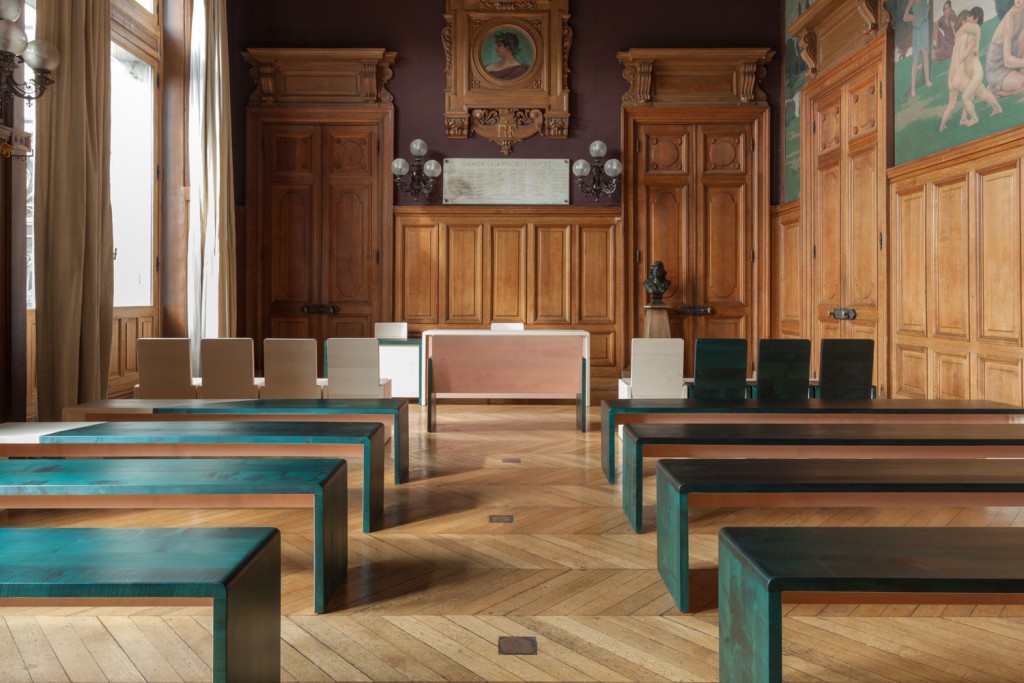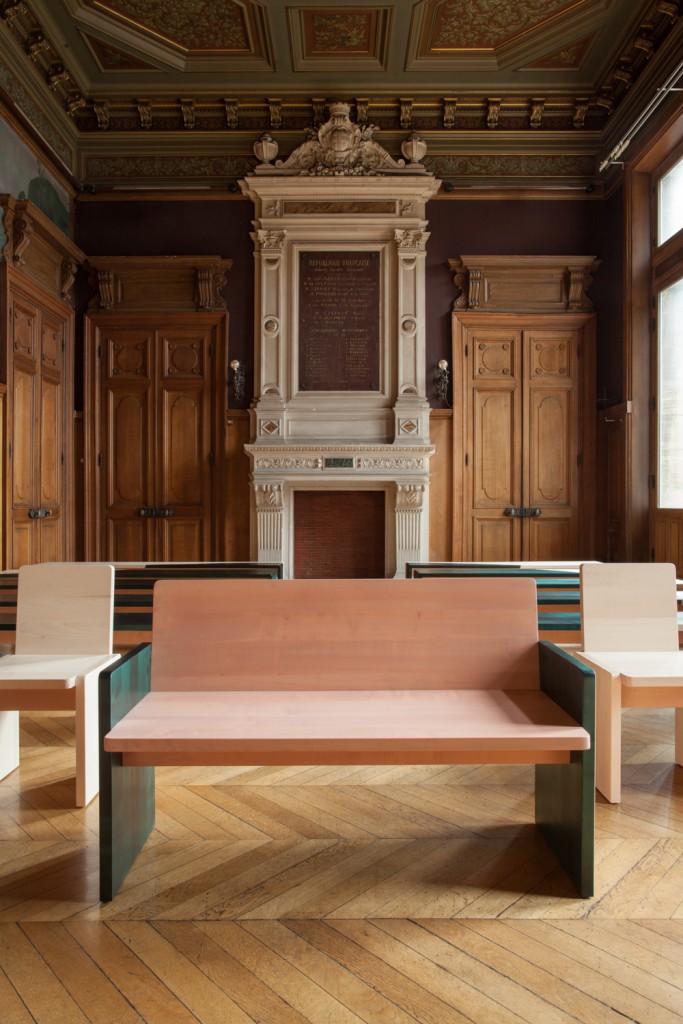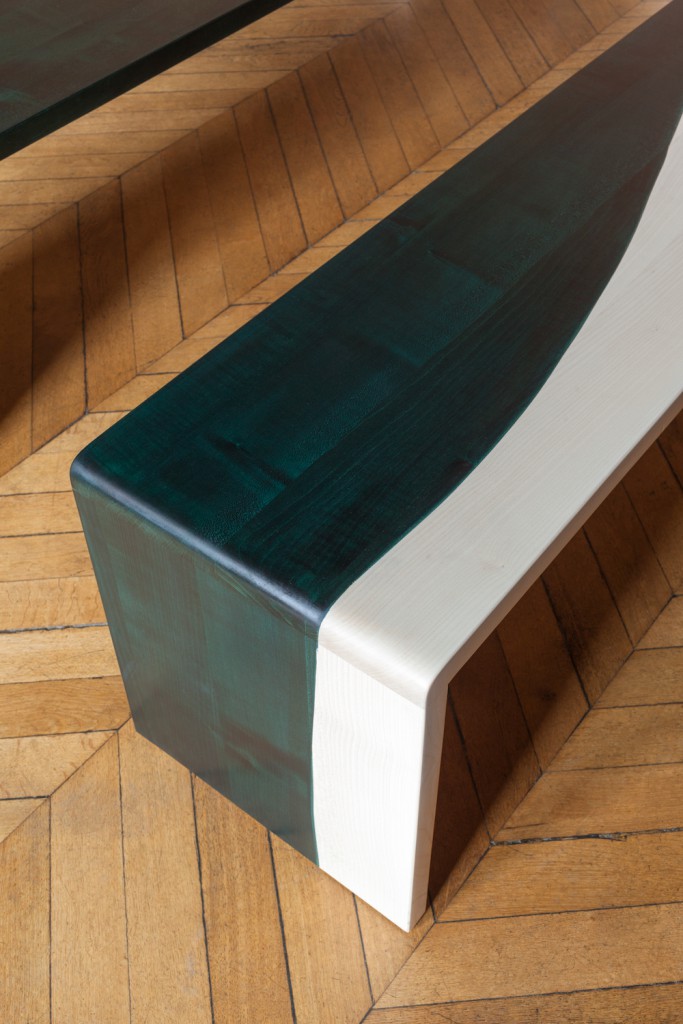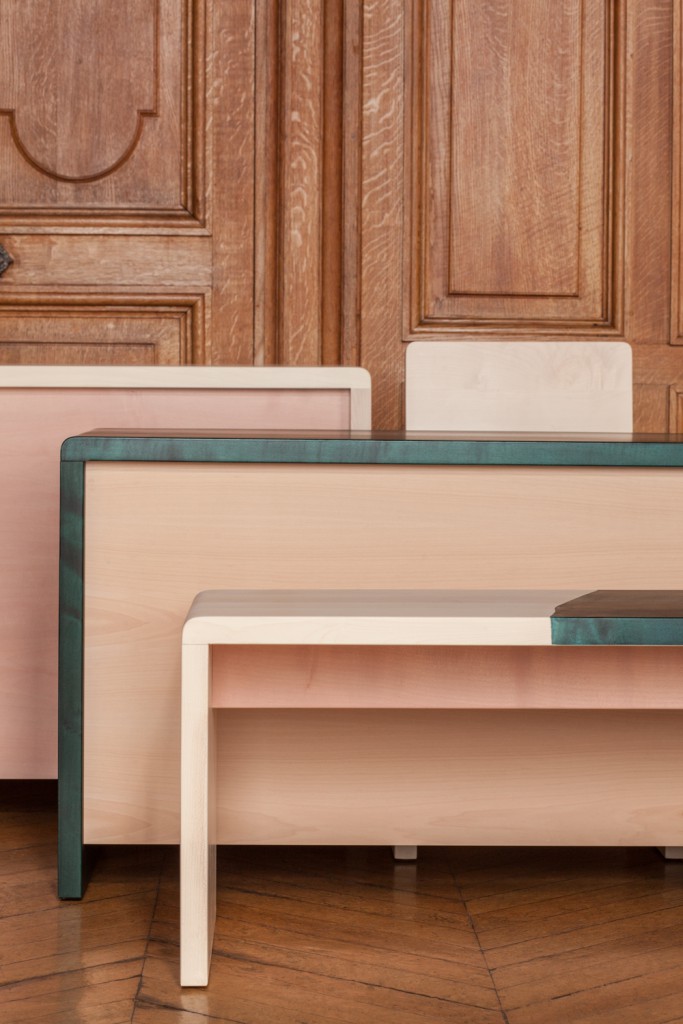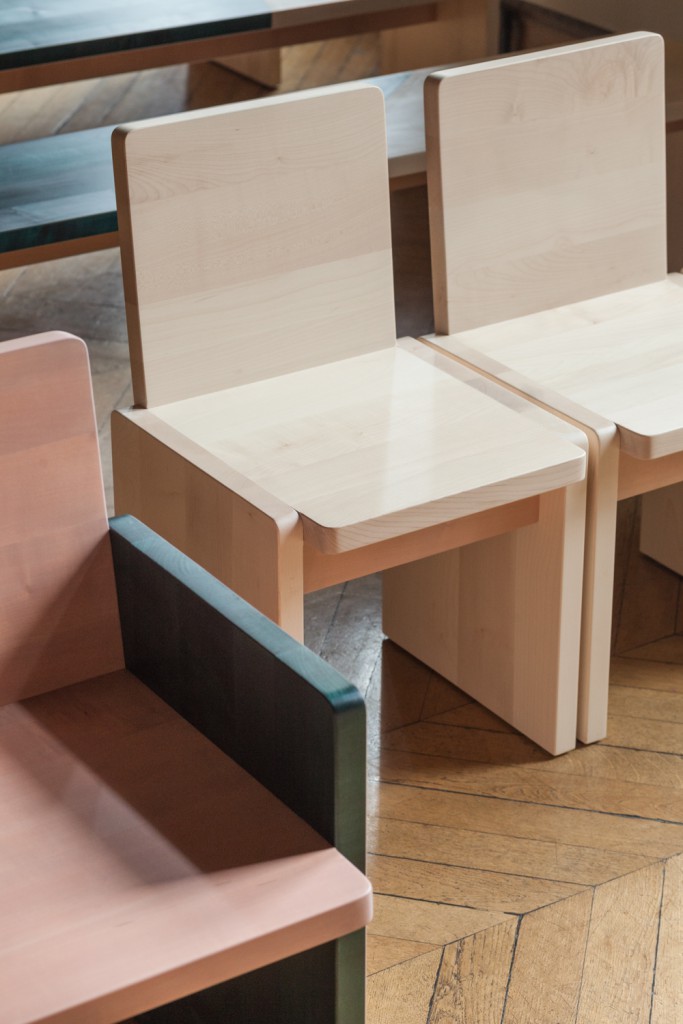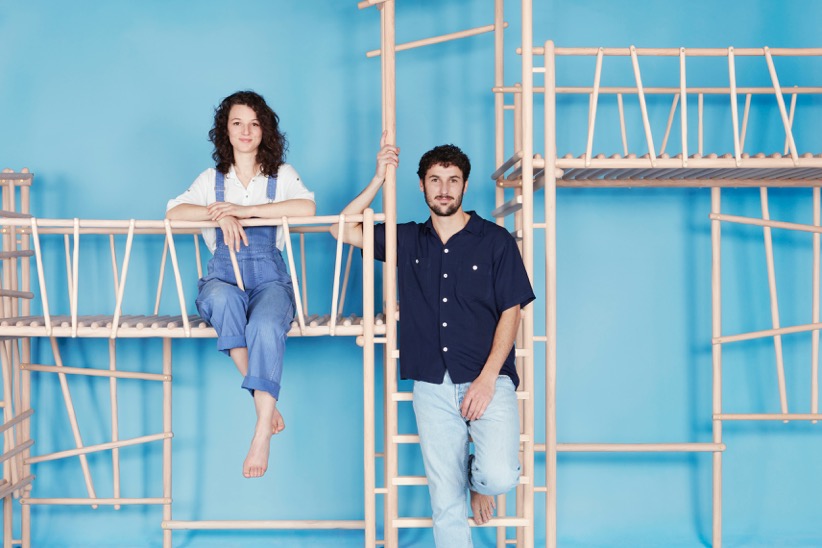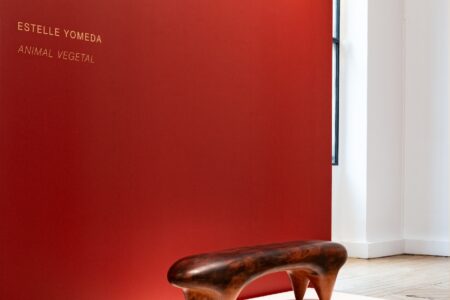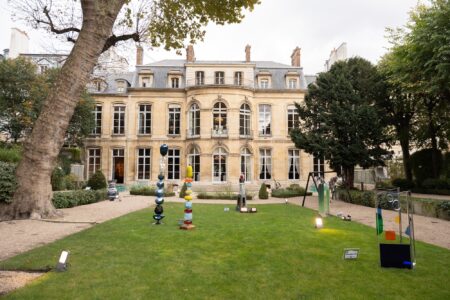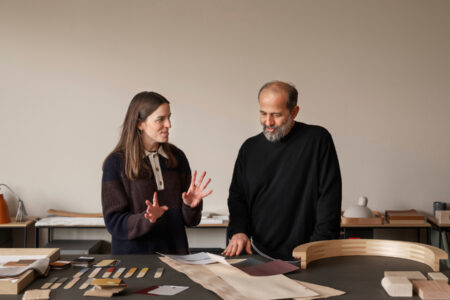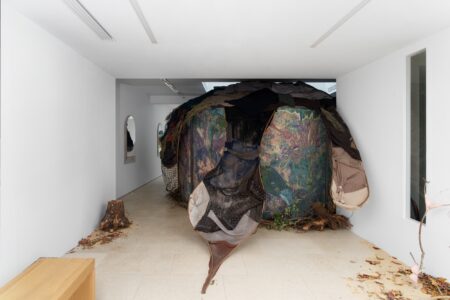Marriage Sauvage Style
French duo Atelier Sauvage was commissioned to replace the furniture in the wedding room of a 19th-century mairie in Paris. The result? They went to town on the town hall.
Parisians getting married in the city hall of the suburb of Pantin are in for a treat. The commune’s authorities recently asked Atelier Sauvage to rejuvenate the “dark and austere” furniture in the building’s neo-renaissance wedding room, and the designer duo went to town on the town hall: the result is a contrast of styles, with heritage on one side and a lively, fun set of chairs and benches on the other.
We spoke with Albane Salmon and Paul Demarquet about their project, while also discussing the possibility of a design renaissance heading north from the Provence-Alpes-Côte d’Azur region.
TLmag: What was the brief originally like? Was the city hall interested in this type of aesthetic response?
Atelier Sauvage: Public contracts in France are always attributed through a bid. We were invited to submit a proposal, as did three other local craftsmen, for the replacement of the furniture of the wedding hall.
The brief was pretty short and open: the idea was to get rid of the old furniture, which was pretty dark and austere, not very well suited for a wedding ceremony. The dimensions and the quantity of each piece of furniture were set, as well as the will of the town to buy locally made and environmentally friendly furniture. However, the only guideline we received regarding the design was to ensure that the materials and shades used for the furniture would fit harmoniously with the room.
Though we usually confront our work in progress with the opinions of the final users or clients, and we do appreciate how those dialogues sometimes enrich our projects, we really enjoyed the creative freedom allowed by this simple brief. We wanted to highlight the décor of the room through a striking stylistic contrast, and are very happy that our project caught the eye of the jury.
TLmag: You can tell the proposed palette jumps off the existing painting. Apart from the chromatic choice, what else caught your eye about it?
AS: The painting by Charles-Auguste Edelmann is an evocation of the land of Arcadia, an antique symbol for harmony and happiness. It shows women and kids bathing in a lake, playing music and dancing around an old man with a lyre. In antique mythology, Arcadia is associated with the idea that, right after its creation, humanity enjoyed a golden age, a time of peace and leisure where abundant nature provided every single need.
We liked the idea that we could infuse the atmosphere of the wedding ceremonies with the lightheartedness of Edelmann’s crowd, by creating a continuity between the physical room and the imaginary world depicted on the wall. To make it work, the furniture needed to be presented with simple, pared down lines, to look fresh, easy on the eye and let the room breathe, while acting as a bridge between the two spaces.
TLmag: How did you decide on the materials and the finish of the pieces?
AS: The use of solid wood is central to our practice, as we make our designs ourselves and are trained cabinetmakers. In this case, the choice of sycamore was pretty obvious because it addressed our primary concerns: its white color was a way to add more light and freshness to the atmosphere -though the room enjoys a lot of natural light, its important dimensions and dark wooden walls made it look a little austere.
White wood is also a good choice when you want to stain wood with bright colours. Stain, as opposed to paint, is transparent. It is nice because it doesn’t hide the natural patterns created by the structure of wood, but the colour of the wood itself contributes to the final shade.
We decided to use an oil finish that nurtures the wood from the inside and gives it a nice satin look, instead of a varnish that can isolate the wood by adding a thin coat on top, is subjected to cracks over time and alters the contact with the natural material.
TLmag: Demographically, Pantin has a very large population of non-EU immigrants, who could potentially be the users of this hall. Did that influence the project in any way?
AS: We like the idea that the stylistic contrasts of Pantin’s wedding hall could be a metaphor for the diversity of the population, but to tell the truth, it didn’t consciously impact the project. Our aesthetic choices were based on the will to stir positive emotions and contribute to a festive celebration for every user of the hall. We had been exploring the idea of stained wood in the previous months, and we thought that the use of colour could definitely help reach that goal.
TLmag: You’ve said that, in your work, you pay homage to the nature of the south of France. I’ve been following Simon Porte Jacquemus’ career and I’ve noticed that he is unapologetically and proudly Marseillais, and that is part of what has made him so successful. From your point of view, is the South having a moment in the French creative scene?
AS: We come from very different places in the south, but the two areas share a common vicinity with nature and a relatively sunny weather, which definitely impact the local lifestyle. However, Paris being the centre of the creative and economic scenes we, and many other people from the south, ended up settling there for work and we cultivate a form of melancholy of the south.
Though the southern lifestyle and scenery are, of course, all the more inspiring and romantic for the southern “expatriates” who are missing it, it is also getting more attention among the French youth in general, who are currently rewriting the definition of success and happiness —in opposition to the mostly economic view of previous generations.
Fortunately, every time we go to Marseille, we realise that the city strives with more and more economic and creative dynamism, and we can’t help but hope that we could open our studio there soon.
